After 20 years, the Chrysler Crossfire is making inroads in the collectible market
Daimler chairman Jürgen Schrempp, an architect of the 1998 merger that resulted in DaimlerChrysler, described it then as a “marriage made in heaven.”
But for five years, it appeared that the couple had taken a vow of chastity. Where was the first child from that Chrysler and Mercedes marriage?
In 2003, it was finally delivered: A 3084-pound bouncing baby sports car named the 2004 Chrysler Crossfire. The platform, suspension, and drivetrain were from the Mercedes SLK—Chrysler claimed that nearly 40 percent of the car was Mercedes, but it felt like more, from the 3.2-liter, 215-horsepower normally aspirated V-6 to the awkward cruise-control stalk that hung from the steering column. Still, using Mercedes mechanicals trimmed the development time to a brisk 24 months, at a bargain cost of $275 million.
The art deco styling was all American, though. Designer Eric Stoddard penned the original concept car that debuted at the Detroit auto show in 2001, and the resulting production car looked remarkably like it; toned down a bit on all four sides, but faithful.

The Crossfire was Chrysler’s first sports car, but like the SLK roadster, it was less a performance car than a casual cruiser. (“The blended DNA of Daimler-Benz and Chrysler Corporation produced its first offspring in 2003, and hairdressers rejoiced,” wrote Hagerty’s Aaron Robinson, then of Car and Driver.) 215 horsepower impressed no one at a time when the Honda Accord was available with 240 horses.
That said, the car handled quite well, less a result of the independent suspension—double wishbones up front, multilink in the rear—than the massive Michelin Pilot Sport radials: 18-inch 225/40ZRs in front and 19-inch 255/35ZRs out back. All-season Continentals were an option, and either choice was mounted on flashy alloy wheels. The fairly soft suspension tempered the ride over rough pavement, helpful when you have a car with a short 94.5-inch wheelbase. Steering was a dated recirculating-ball unit; brakes, from the SLK, were excellent.
That wheelbase was the same as the SLK. The rear-drive Crossfire was a tenth of an inch longer, but about two inches wider, which added room to the interior. The platform was extremely stiff—stiffer than a Porsche 911, Chrysler claimed.
“Crossfire could have been tuned as a boy racer, but we took a more refined approach because Chrysler is a premium brand. It’s a plush car, but not so plush you have to be bashful when it comes to handling or performance,” said Larry Achram, then Chrysler’s vice president of advanced vehicle engineering, at the model’s introduction.
Inside, the high beltline and smallish windows made for a slight submarine feel. Visibility, especially when backing out of a parking space, was a challenge. Rear visibility was trimmed further by the automatic power spoiler, which popped up as the Crossfire approached 57 mph. The awkward cupholder was apparently added as an afterthought.
Transmission was a passable six-speed manual, or a five-speed automatic, both from Mercedes. Aside from tires and color, the transmission was your only major choice to make at the dealership. ABS, traction control, and stability control came standard.
Inevitably, those who wanted either more boy-racer power or a convertible roof, or both, only had to wait a year or so. The SRT-6 used a Japanese-built supercharger and an intercooler to boost horsepower by 115 to 330. Alas, the manual transmission was missing from this version.
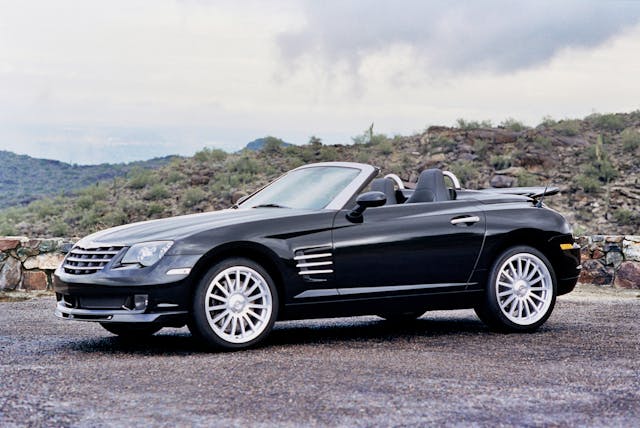
The convertible was a soft top, unlike the retractable roof on the SLK. The open-air feeling was nice with the top down—no major wind buffeting, and much-improved side visibility.
The SRT-6’s stiffer suspension and improved handling came at the expense of the ride, though—it became jarring on road transitions and bumps and potholes. Chrysler salespeople usually mapped out a route of smooth pavement for prospective SRT-6 customers.
At introduction, the price of the Crossfire was $34,495 for the manual model, $35,570 for the automatic, including shipping. Figure about $5000 more for the convertible, $10,000 for the SRT-6. Get both, and you topped out around $50,000.
In terms of sales, the prices may have been optimistic, as the Crossfire was marketed against other attractive imports (the Crossfire was built at the Karmann plant in Germany) like the Audi TT, Nissan 350Z, Infiniti G35, and Mazda RX-8. Chrysler wanted to sell 20,000 Crossfires a year: They managed that through 2005, but sales fell off a cliff in 2006. Chrysler even eliminated a few features in 2005 to offer a true “base” model, with a price closer to $30,000. You can tell one by the absence of fog lights. 2008 saw Crossfire production draw to a close.

Which brings us to the present. Anecdotally, several of our team have encountered die-hard Crossfire enthusiasts who remain doting owners or remember their Crossfire experiences with a fondness usually reserved for family pets. It’s not too hard to see why—the Crossfire, in any configuration, can be a fun and affordable weekend toy.
The car is reasonably sturdy thanks in part to the Mercedes underpinnings, unless you are one of the unfortunate owners who has experienced perplexing electrical problems. Overall, though, maintain it like you would any older car, and the Crossfire should provide years of good service.
While we don’t track the Crossfire in the Hagerty Price Guide, we are seeing signs that the little sports car is beginning to achieve some collector status. Our insurance policies written on Crossfires have more than doubled since 2018—it’s still a modest amount of cars insured, but the increase is substantial. Also up is the number sold at collector car auctions: only five Crossfires made it to public auction in 2015, but that number has steadily increased to 71 so far in 2023.
Based on insurance quotes sought, buyer demographics have remained consistent over the last four years. Boomers are the most enthusiastic, at 63 percent of buyers, followed by Gen X at 20 percent. Younger buyers have held steady at a little more than 5 percent since 2020.
The average value of $13,727 on those policies is about the same as it was in 2018—it’s actually down $200. Auction prices are a touch higher, with the average sale price for the base car coming in at $14,319, while the SRT-6 commands a 27-percent premium, coming in at $18,200. We’ve seen high-mileage versions go for considerably less.
The Crossfire is a handsome, undeniably distinctive sports car with no glaring faults. It may not yet be unanimously considered a collectible, but it’s on its way.
***
Check out the Hagerty Media homepage so you don’t miss a single story, or better yet, bookmark it. To get our best stories delivered right to your inbox, subscribe to our newsletters.

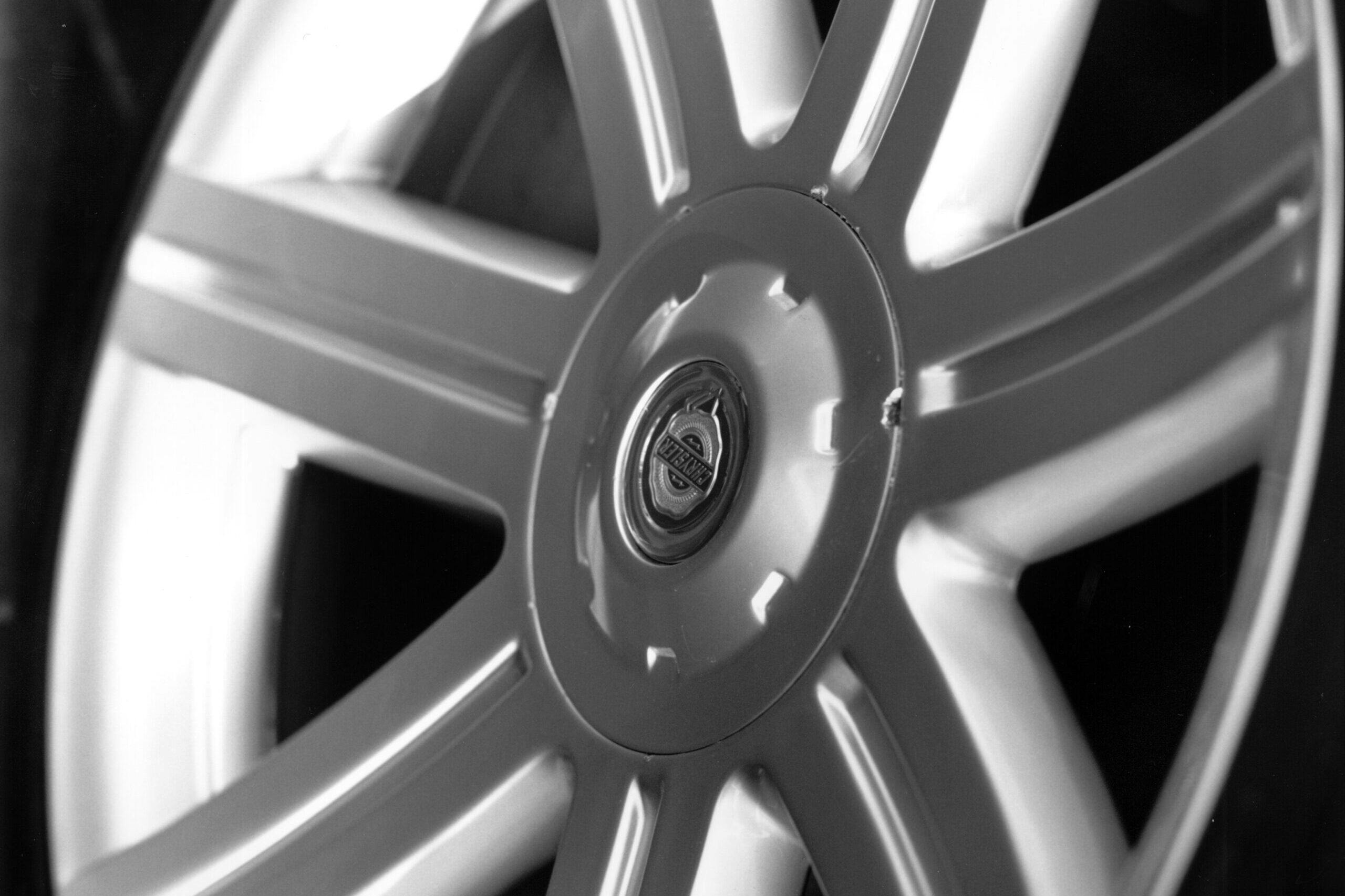
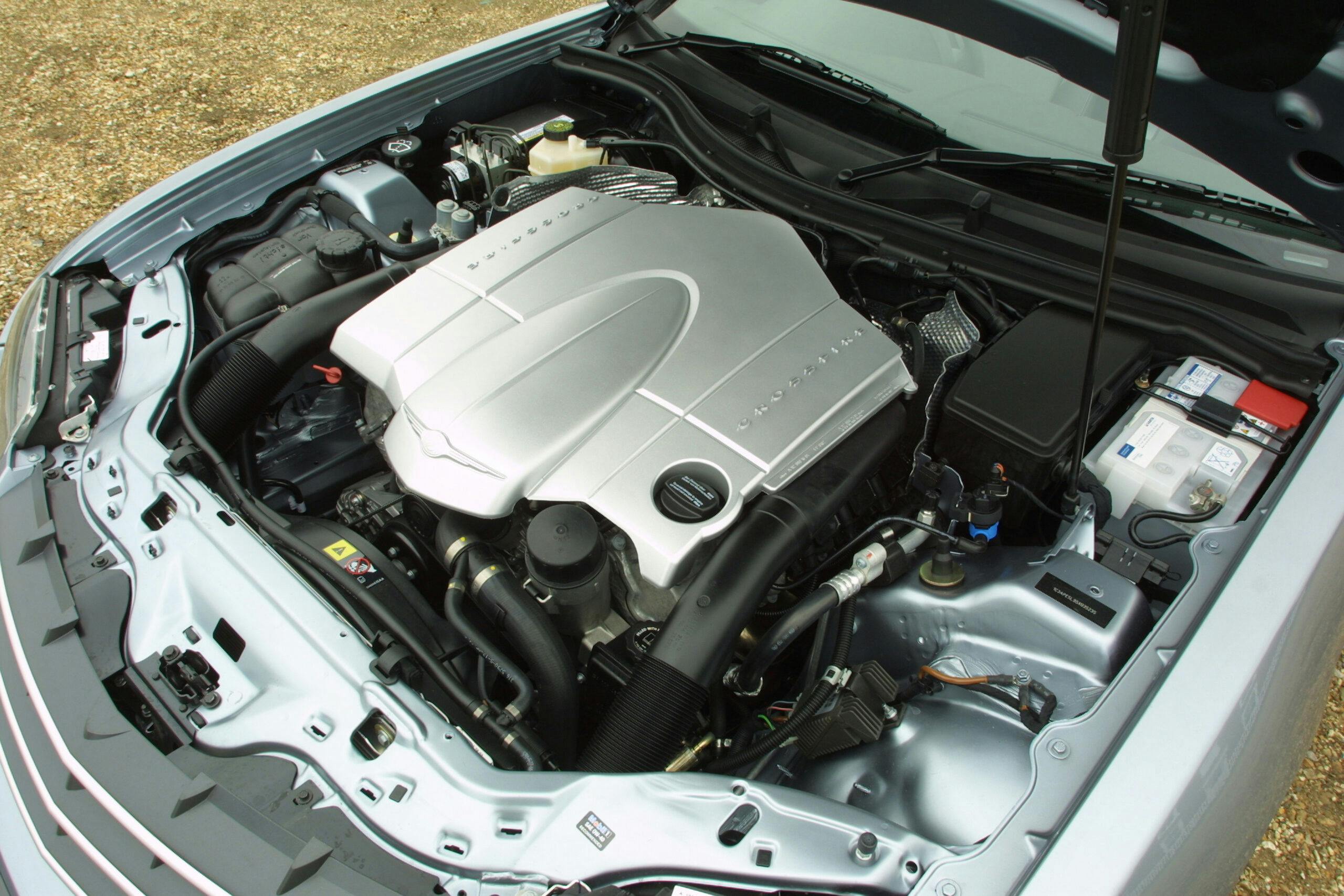
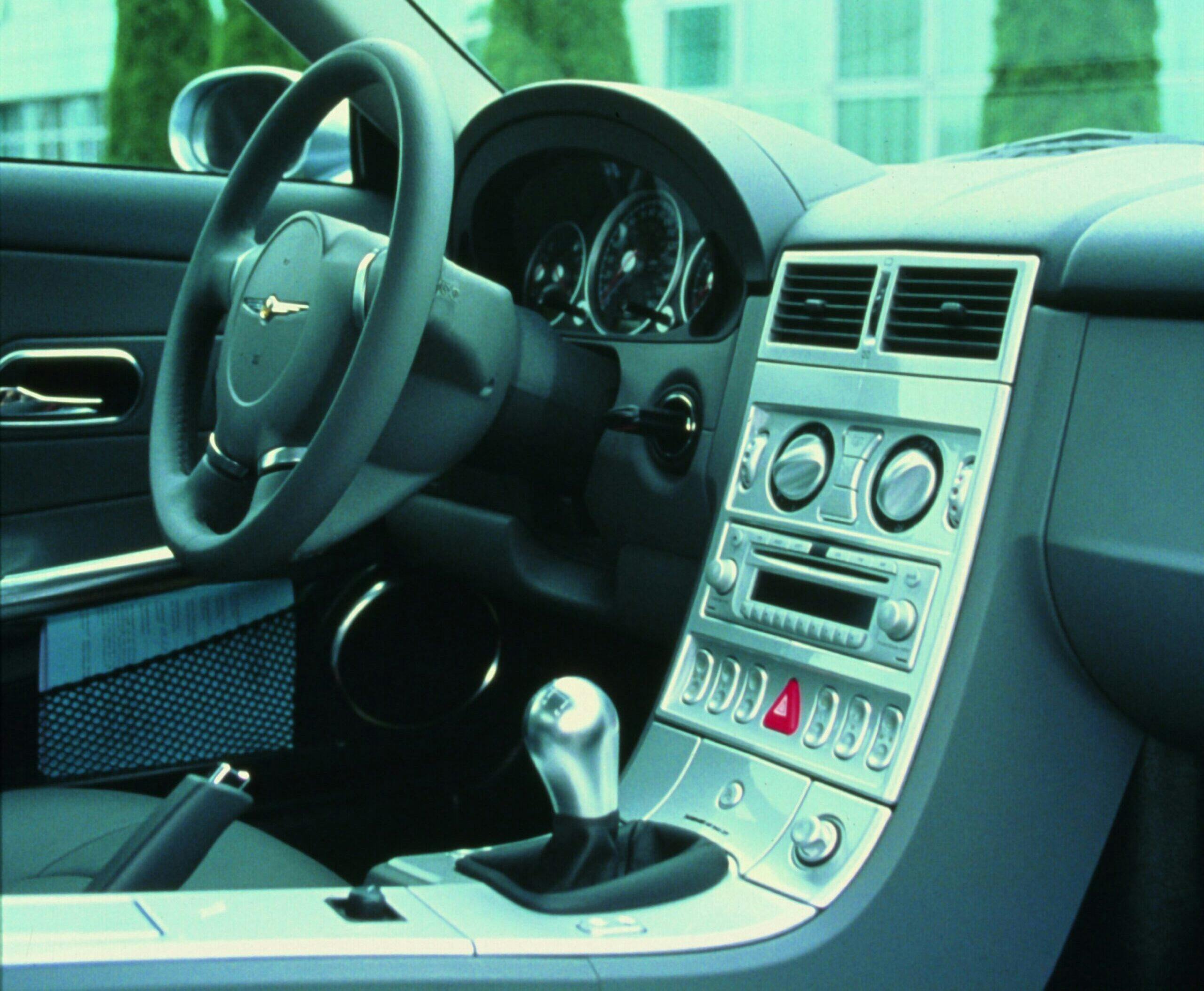


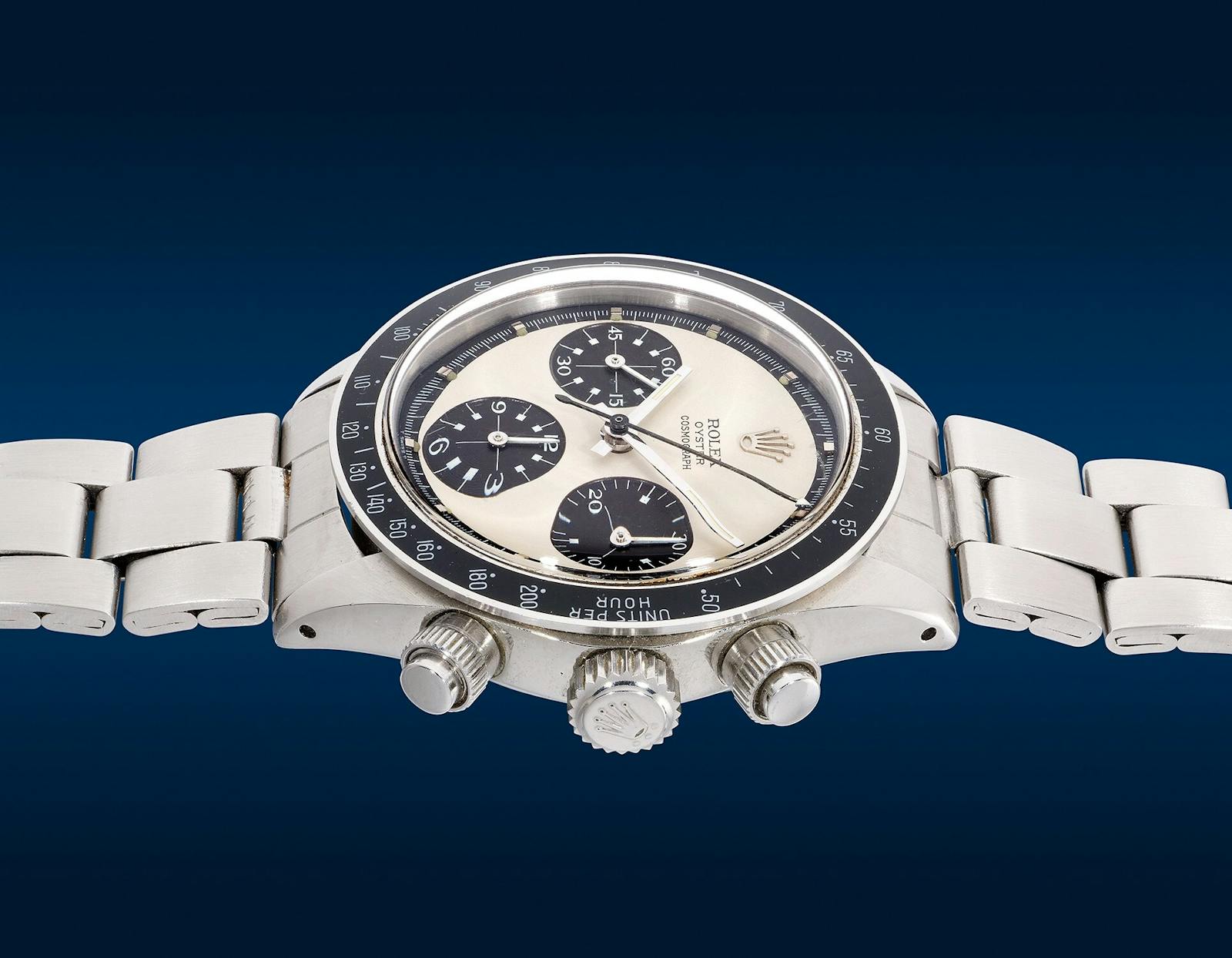
I bought a 2005 Crossfire SRT convertible with 12k miles on it in 2012 for $19,000. It was a honey of a car and lots of fun. I had people ask me at traffic lights “who makes it.” I would holler back, Chrysler, and then I’d watch the stunned looks of disbelief. I drove it for five years and sold it to a friend for $5,500. The car had 22k miles on it by then. My friend drove it for several years until his death. My reason for selling was a growing fear that something was going to break on it that would be complicated to repair and would cost an arm and a leg to. The only repair it ever needed was a replacement of the onboard computer. That was pricey, but I had purchased a Zurich extended warranty and they covered the whole cost, minus a $100 deductible.
It’s that ridiculous hood designed by Graf Zeppelin that ruins it for me, I am sure an after market hood would be an improvement.
I have always liked the Crossfire design and aerodynamic styling. I purchased a low mileage SRT-6, Triple Black Convertible, in 2011 in Texas and brought it back to Calgary, Alberta. I still love this little car, super fun to drive ( about 1000 miles a year), and it does draw attention to itself. Hopefully, it does make it to the collector lists, as far as I’m concerned, it certainly deserves it. Cheers Ron
The SRT6 represents about the cheapest available speed you can get in the used car market (leaving the LS1 GM cars aside). AMG engineering at a used Camry price. I hope this article doesn’t change that too much.
Love our 2006 Crossfire roadster and would never part with it. Rides and handles amazingly, comfortable and rich interior, nice performance and a fantastic sound system topped off with drop dead styling. Gets high five reactions and lots of complements at car shows. It is our forever car.
Glad you love your Crossfire, Bill. Great car.
Never like the coupe, as it looked like an AMC Marlin – never the most attractive AMC. The convertible looked a lot better, though – and it was a convertible, a plus for nearly any model. I would call it a “sporty car”, not a “sports car”, though, except maybe in SRT-6 form.
I have a 2006 Limited model I owned since new. It has just under 15,000 miles on it now. It gets a lot of compliments and turns a lot of heads. It’s a black 6 speed coupe and I’ve done a performance ECU tune on it. I once owned a 1971 Grand Prix SJ with a L75 455 cu in engine and my Crossfire with it’s non supercharged naturally aspirated 195 cu in engine is actually faster in 0-60 and quarter mile times. Don’t believe me? Look it up. It also lists as faster in those qualities than a 1968 Camaro 396 SS. I love my Crossfire more than any car I’ve ever owned, and I’ve owned some nice cars over the years. Since new she only gets driven in good weather during the warm months never in the rain. Stored winters. I love my Crossfire.
Glad to finally see a positive comment, instead of all these contrarian haters. I own an ’04 6-speed with a tune and it’s pretty quick at sea level in cold weather. I bet it would do a low 14’s or even high 13’s 1/4 mile. Not bad considering the era it was built in.